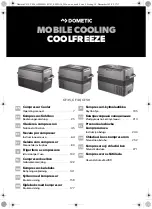
F
igure 10-7 The Process of DHCP
1)
DHCP discover: the client broadcasts messages on the physical subnet to discover
available DHCP servers in the LAN. Network administrators can configure a local router (e.g.
a relay agent) to forward DHCP-DISCOVER messages to a DHCP server in a different
subnet.
2)
DHCP offer: Each server who received the DHCP-DISCOVER message may respond a
DHCP-OFFER message that includes configuration parameters (in the example below, IP
address) to the client. The server unicast the DHCP-OFFER message to the client (using
the DHCP/BOOTP relay agent if necessary) if possible, or may broadcast the message to a
broadcast address on the client's subnet.
3)
DHCP request: A client can receive DHCP offers from multiple servers, but it will accept
only one DHCP-OFFER and broadcast a DHCP-REQUEST message which includes the
server’s identifier and the IP address offered by the server. Based on the server’s identifier,
servers are informed whose offer the client has accepted.
4)
DHCP acknowledgement: The server selected in the DHCP-REQUEST message commits
the binding for the client to persistent storage and responds with a DHCP-ACK message
containing the configuration parameters for the requesting client. If the selected server is
unable to satisfy the DHCP-REQUEST message (e.g., the requested IP address has been
allocated), the server should respond with a DHCP-NAK message.
5)
In Dynamic assignment policy, the DHCP client is assigned an IP address with a lease time
(e.g. 2 hours) from the DHCP server. This IP address will be reclaimed by the DHCP server
when its lease time expires. If the client wants to use the IP address continually, it should
unicast a DHCP-REQUEST message to the server to extend its lease.
After obtaining parameters via DHCP, a host should be able to exchange packets with any
other host in the networks.
The Format of DHCP Message
Figure 10-6 DHCP model gives the process of DHCP and
describes each field in
the DHCP message. The numbers in parentheses indicate the size of each field in octets. The
names for the fields given in the figure will be used throughout this document to refer to the
fields in DHCP messages.
172
















































